What I’m Doing at Kirkus This Week,
Plus What I Did Last Week,
Featuring David Covell and Brian Floca
 June 29th, 2018 by jules
June 29th, 2018 by jules
(Click image to enlarge)
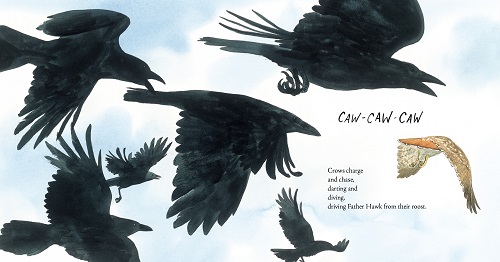
driving Father Hawk from their roost.”
— From Maria Gianferrari’s Hawk Rising, illustrated by Brian Floca
(Click image to enlarge)
Over at Kirkus today, I’ve got a picture book I find to be a bit of a balm for one’s soul right about now.
That is here.
Last week, I wrote here about Maria Gianferrari’s Hawk Rising (Roaring Brook, June 2018), illustrated by Caldecott Medalist Brian Floca, as well as David Covell’s Run Wild (Viking, June 2018). Today here at 7-Imp, I’ve got some art from the books, and both Brian and David visit to share some thoughts on their respective books, as well as preliminary images (early sketches, etc.) I thank both of them for sharing.
Enjoy!
and Thoughts from Brian:
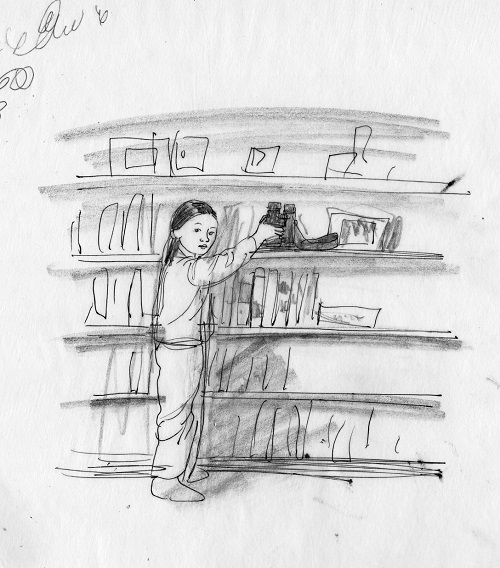


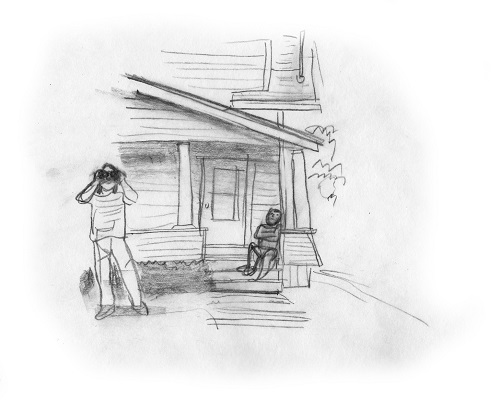

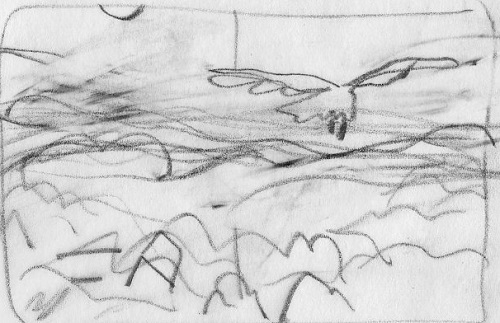



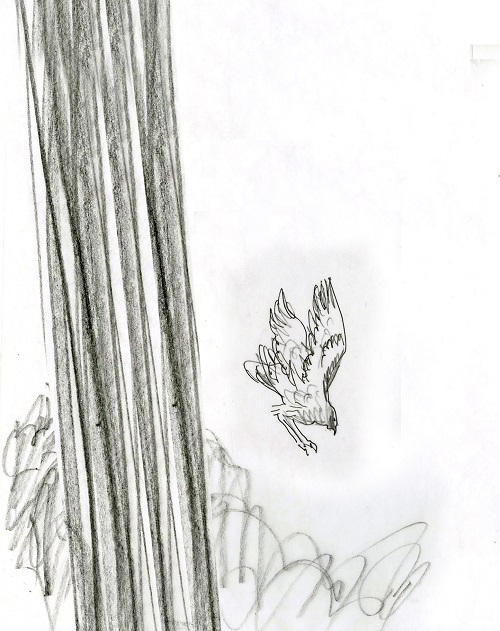
Brian: As the sketches [above and below] might suggest, the bird-watching young person was a boy, originally — but only briefly and only when the book was still in its most protean form (and probably only because I was once a boy, too). Very early on, the character shifted to a girl. She was a lone watcher, with no sibling. I liked the idea of her noticing the hawk on her own (and especially without Mom and Dad lurking behind her with a copy of Sibley’s). There’s something solitary about a hawk, and I liked the idea of there being something solitary and private in watching one, too.
(It’s funny you mention her having easy access to binoculars; I did at one point make a sketch of her stealthily plucking a pair off the shelves. I think we decided to rush her out of the house, though, and not worry about the where and the how of the binoculars!)
It was wrestling with how the girl would react to the hawk catching a squirrel that brought a sister into the book. That moment was, in fact, one of the reasons I wanted to illustrate the book; I was impressed with Maria’s honest presentation of an animal acting as an animal — not as a character, or as a vehicle for a human lesson, but as an animal. I knew I wanted to depict the moment as directly in imagery as Maria had in words (“not for the faint of heart,” says Booklist!) — but how the girl would react was harder for me to resolve. I was helped along finally by a Mary Oliver poem, “The Osprey,” in which Oliver observes with admiration and fascination as an osprey snares a fish from a lake, and then later struggles as she tries to incorporate the sensations of the prey as well as the predator into her impression of the event. It’s an injustice to the poem to quote just the conclusion — but here’s just the conclusion!:
later,
when the fish was gone forever
and the bird was miles away,
I came back
and stood on the shore, thinking –
and if you think
thinking is a mild exercise,
beware!I mean, I was swimming for my life –
and I was thundering this way and that way
in my shirt of feathers –
and I could not resolve anything long enoughto become one thing
except this: the imaginer.
It was inescapable
as over and over it flung me,without pause or mercy it flung me
to both sides of the beautiful water –
to both sides
of the knife.
The poem helped me realize I both wanted to and could acknowledge more than one reaction to the moment of the hawk’s success and the squirrel’s death in Hawk Rising, and in that discovery our protagonist gained a sibling — one watcher for each side of the knife. Again, the book nearly had a boy. The sibling was a brother, briefly — if you’ve got a girl, add a boy was my lazy first thought — but the more similar the siblings, the more potentially interesting the idea of the different reactions, I thought, and so two sisters.
I’m grateful to Maria Gianferrari for the manuscript and for the chance to work with Emily Feinberg and Anne Diebel and the team at Roaring Brook!



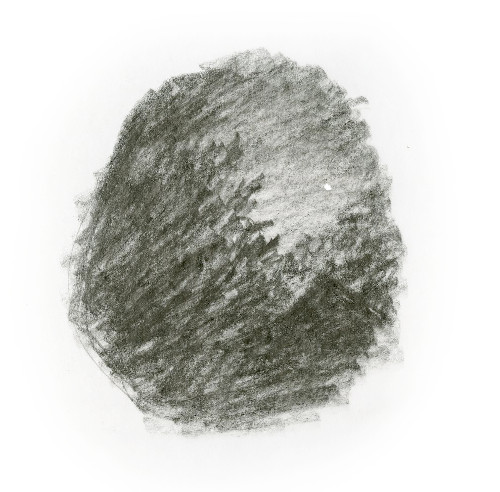









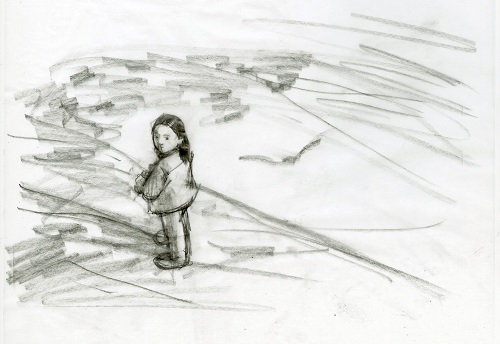

(Click to enlarge)



(Click image to enlarge and read text in its entirety)



Run Wild and Thoughts from David:




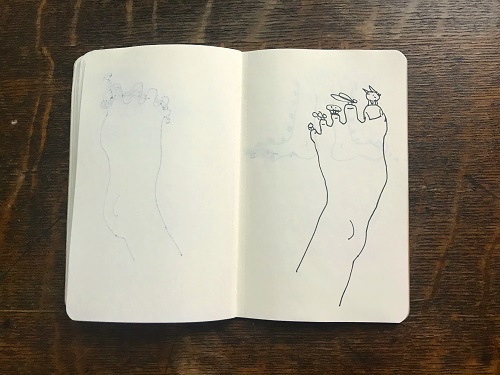

(Click each to enlarge)





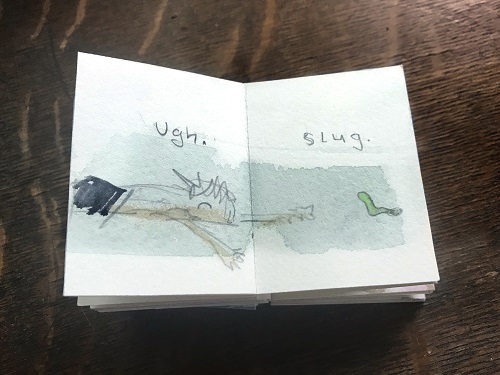
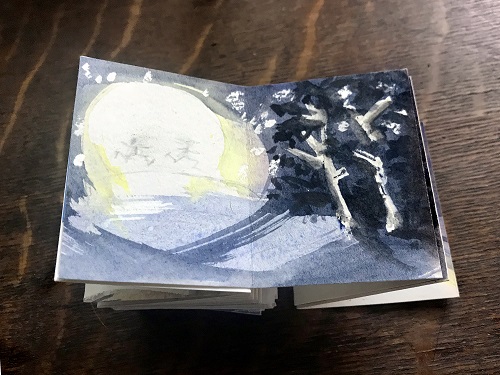
(Click each to enlarge)
David: Run Wild began after a seven-year sprint as the design lead of a branding agency in downtown New York City. I was burned-out. I longed for freedom and for being outside, out of the city and away from anything digital. I’m pretty darned good at and love digital design, but it was time to unplug.
My two previous books (the Rat and Roach books) were rendered with digital tools, mixed with city textures to disguise the computer. With the idea of getting off devices, Run Wild had to feel natural, earthy, imperfect, and real.
I wanted Run Wild to feel like it had just been drawn, like it spontaneously appeared on the page, and without the worry of it being “finished” – like a sketchbook.
When I was a kid, watercolor was my go-to medium. It was cheap and ready-to-travel. But it had been a while since I cracked open a palette. I had to re-learn. I studied the brilliant looseness of Chen Wen Hsi and, believe it or not, the early drawings of Warhol and Picasso. Remember his poster of two hands holding flowers? Yes, that!
Denise Cronin — my sharp, creative “eye” at Penguin — asked, upon seeing an early round, “Are these finished?” And then emphatically, “Yes! I think they are!” (Okay, we did do some refinements, but I won’t tell you what they were.)
I grew up in Maine and wanted to capture the free-flowing energy of my childhood in hopes that kids can feel that same sweet joy. In truth, it’s for anyone any age who needs to escape, like, RIGHT NOW!

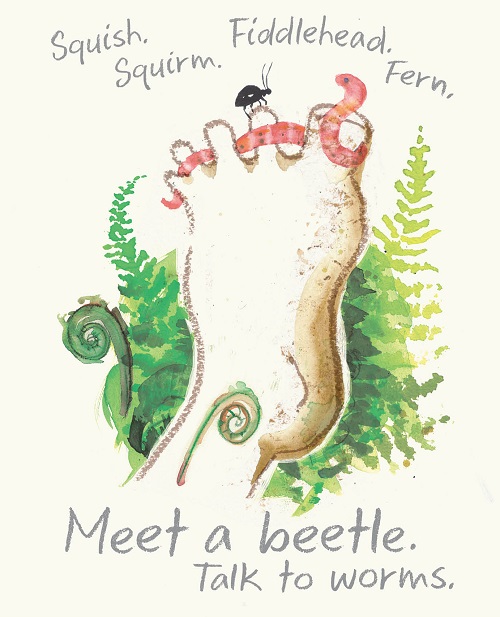



HAWK RISING. Text copyright © 2018 by Maria Gianferrari. Illustrations copyright © 2018 by Brian Floca and reproduced by permission of the publisher, Roaring Brook Press, New York. Preliminary images reproduced by permission of Brian Floca.
RUN WILD. Copyright © 2018 by David Covell. Illustrations reproduced by permission of the publisher, Viking/Penguin Young Readers, New York. Preliminary images reproduced by permission of David Covell.


Loved reading about Brian’s process behind Hawk Rising, and the Oliver poem–very powerful.
And thanks for introducing me to Run Wild–need to do that more these days to escape from the madness! It’s a lovely cover!
Thank you again for featuring Hawk Rising here, Jules!!
I just adore the immediacy and looseness of these illustrations – thank you for sharing. Such a great counterpoint to the digital world we live in. I just want to climb into the books and spend some time there for a while! 😉
[…] themes of nature and family and the feeling of solitude into the story. As Floca discussed in his conversation with Julie Danielson at Seven Impossible Things Before Breakfast, he wanted to capture the solitary […]